Hampi travel guide – Top 7 things you should not miss
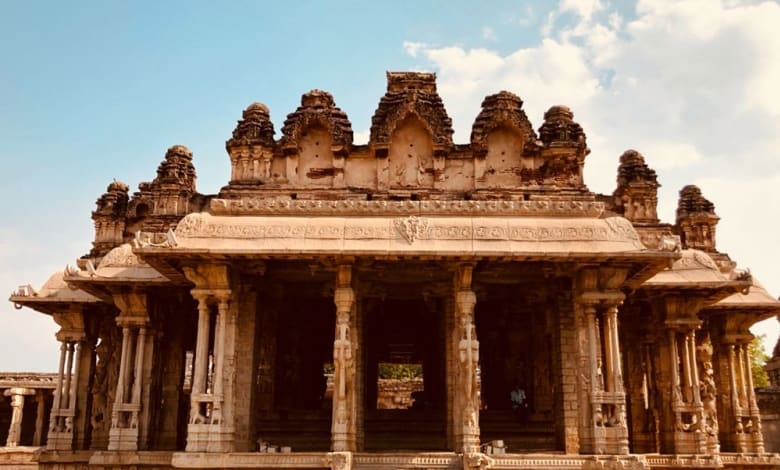
As we speak of Heritage sites in India in our travel blog, here is Hampi travel guide with the top 7 things you should not miss.
“The city is such that the pupil of the eye has never seen a place like it, and the ear of intelligence has never been informed that there existed anything to equal it in the world “– 15th century Persian ambassador Abdul Razaak
I have never believed much in the concept of time travel. Actually going in the future has little to no importance to me. But if you ask me if I could travel back in time, I might be a tad bit interested. I think every traveler loves this part of the travel. When you see some structures and travel to certain places, you automatically travel backward in time to that era. You can actually feel the walls, the stones, and the remains speaking to you, telling you tales of its thrilling past. Hampi is one such UNESCO protected site you should not miss while traveling in India.
Apart from the Mysore visit (read our Mysore travel guide), you can include this offbeat destination in your itinerary.
History of Hampi
Hampi is traditionally known as Pampa-Kshetra. Pampa is another name for Goddess Parvati and it was here that Parvati pursued the love of Lord Shiva. The word later on became Hampa or Hampi.
The ancient history takes us to the era of Ramayana where it was the capital of Kishkindha nagar, the empire of King Sugriva, the king of monkeys. Lord Rama reached Pampa Kshetra or Hampi, while searching for his wife Sita and met Hanumana for the first time.
Situated amidst Dandakaranya, Hampi and the areas nearby are also known for their Buddhists and Jain temples dating back to 1st and 2nd century during Mauryan empire. But the real glory of Hampi commenced when it became the capital of Vijayanagar empire on the banks of Tungabhadra river in around 12th century. The beautiful structures built around this site pertains to the glorious period of Krishnadevrai and Vijayanagar Empire.
But you know the rule, whatever goes up has to go down. Similarly Hampi city also suffered destruction at the hands of Moguls of Delhi Sultanate and Bijapur.
Also read our Essential Travel Planning Guide!
How to travel to Hampi
Travelling to Hampi is pretty simple. It is well connected by buses, trains and flights from Bangalore, Pune and Mumbai.
We traveled by flight from Pune to Bangalore and then to the nearest airport – Jindal Vijayanagar airport, just one hour away from Hospet. As most of the good hotels are based out of Hospet you can stay here. Hampi is just around 20-30 mins distance from Hospet.
Thinking about what to pack? Read our travel blog on Efficient packing for a weekend getaway!
Best time to travel to Hampi:
The best time to travel is the winter season as Hampi is hot during most of the part of the year.
Where to stay in Hampi :
You get a good quality of hotels in Hospet and areas close to Hampi. Starting from Heritage hotels to resorts to good homestays, you get a good range of options here. You can choose the one best suitable to your pockets.
Hampi Travel Guide: Top 7 things you should not miss while sightseeing in Hampi:
You would need at least 3 days to visit in and around Hampi. It is an ideal solo travelers destination, as it is extremely safe to travel in Hampi. The best way to travel within Hampi is to rent a bike or a bicycle. But you can also hire a car.
Schedule such unique experiences on Think Metime mobile app: Download now!
1] Visit to the handlooms and weavers in Koppal
Koppal, near Hampi is a saree making hub. There are many small and big weavers who make sarees from their own looms. The cotton bales are sourced from Coimbatore. They are dyed and woven together to make base as well as pattern of a saree. It is fun to watch the final product coming out of the looms. You can buy these sarees here at a price of around Rs.500/- to Rs.1500/-. I was not guilty for buying a bunch load of cotton sarees from these weavers while supporting my #localforglobal cause during India travels!
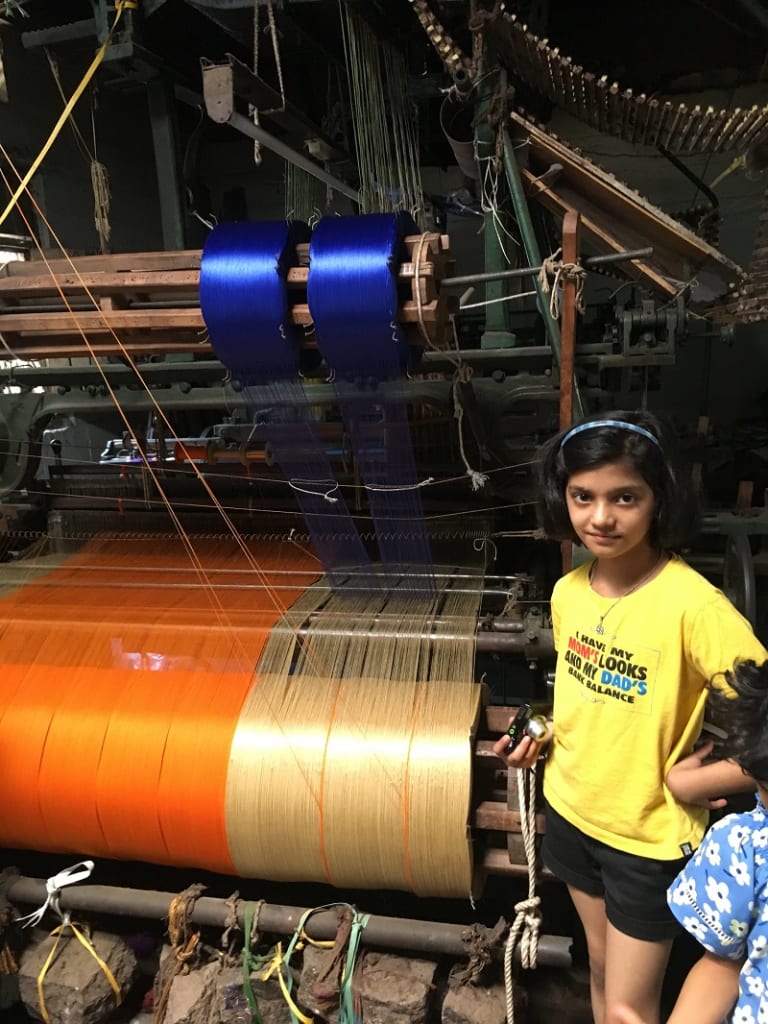
2] Enjoying a local thali
After being exhausted from all the shopping I was all but ready to devour a local meal. To my surprise, it consisted of ‘gulachi poli‘ that is a sweet roti made from jaggery and crushed groundnuts. The sabji and jowar roti (known as bhakari) with salad served by the local hotel called as ‘khanawal‘ never tasted so good. I was happy to know that north Karnataka cuisines has close ties to the Maharashtrian cuisine. And super deal was that the thali cost us lesser than Rs.100/- per head.
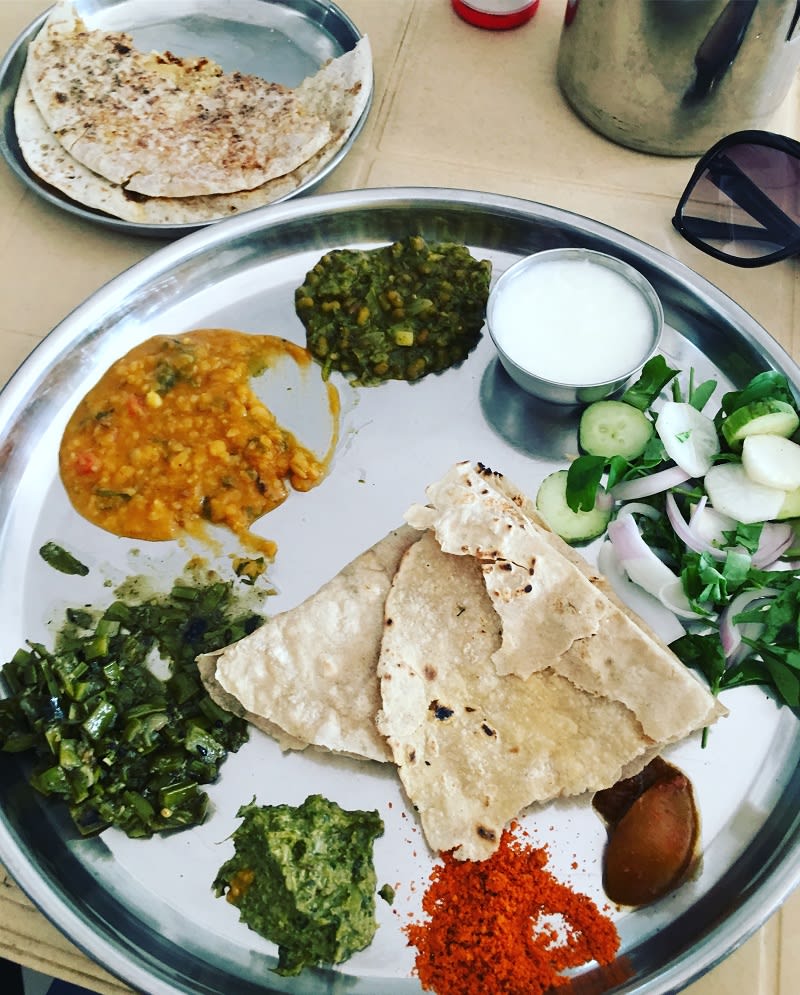
3] Climbing Anjaneya hill and watch sunset
In the afternoon, we decided to climb Anjaneya hill famous for its sunset. This is the birthplace of Lord Hanumana or Anjaneya or son of Anjana. There is a Hanumana temple at the top of around 550 steps. Hydrate well before you start climbing. But do take the efforts of climbing as you will be rewarded with the wonderful sights of green paddy fields, coconut plantations, Hampi ruins and the setting sun! The sunset is the biggest attraction so you can plan your timing accordingly.
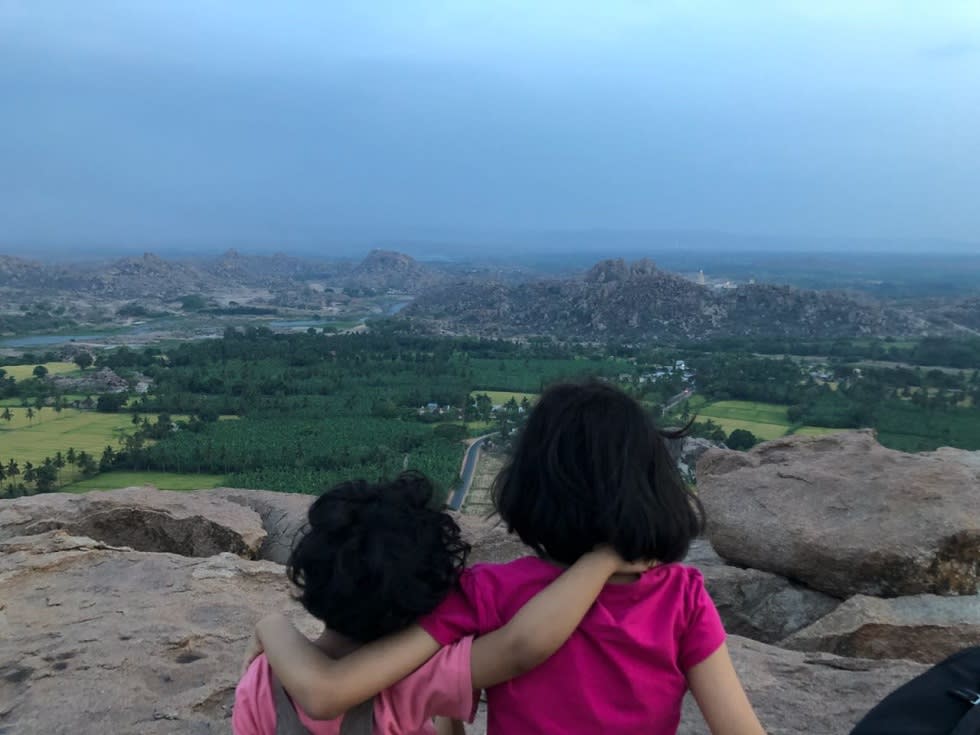
4] The tour of Hampi Ruins
Hampi is so huge that there are about 2000 temples in the area filled with intricate architectures displaying arts of ancient Hindu, Buddha, Arabian and Portugese cultures.
Visit to Hampi ruins would be a waste without a guide. There are many guides available at Hampi and they are indeed knowledgeable. You can travel the ruins with the government tour with an option for A.C. bus. The charges are RS 350/- per head and includes a guide as well. Other options are to to hire a rickshaw or a car or a bike.
If you decide to visit the ruins on your own, then refer to the website – hampi.in – it gives all the details of the monuments and properties to be visited.
Virupaksha Temple
The tour starts with visit to the Virupaksha temple. It is dedicated to Lord Shiva. It is believed to be functioning from 7th century and hence the oldest functioning temples of India. The temple is worshiped even today and you can attend the puja in the early morning. The timings of the temple are 9 am to 1 pm and 5 pm to 9 pm. The carvings in the hall of the temple are still intact. You can see a mix of Chinese, Portuguese, Arabian and Indian cultures in the carvings.
Fun fact – ask your guide to show you a point where shadow of the top of the temple appears upside-down using the pinhole technique.
Monolithic Ganesha, Narsimha and Shiva Linga
Then you move ahead and would see huge monolithic structure of Ganapati. This structure has Parvati at the back and looks like Parvati holding Lord Ganesha. It is a 21 feet tall monolithic structure.
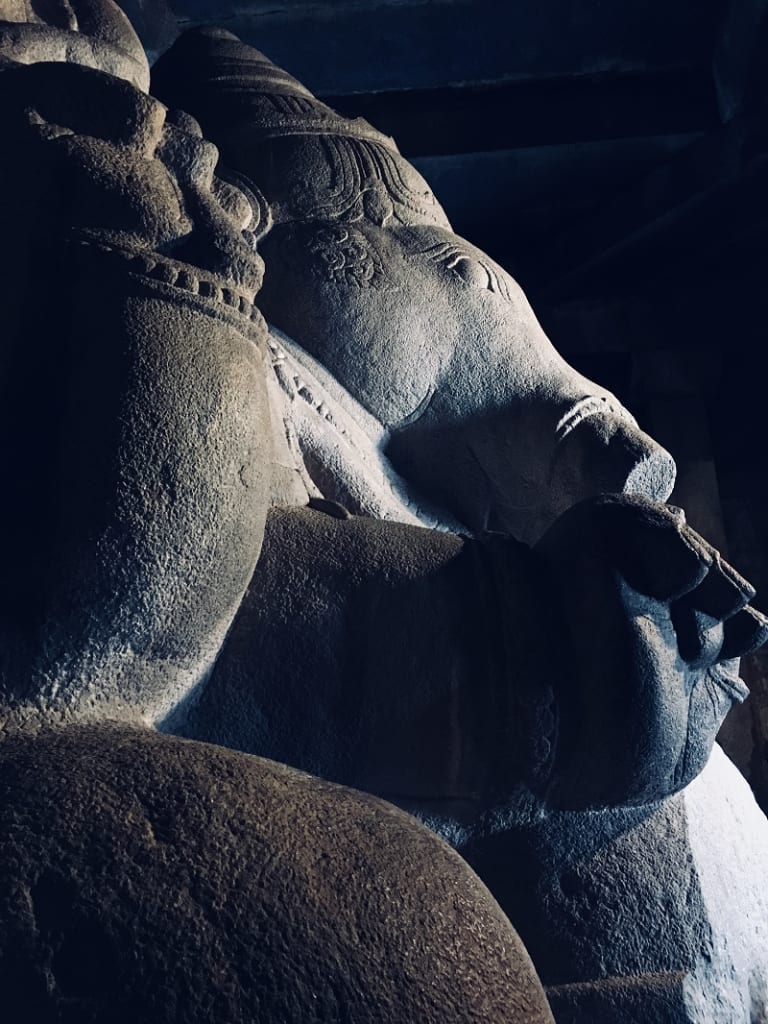
There is a huge monolithic structures of Lakshmi Narshimha, also known as Ugra Narsimha. The monolithic structure also consist of Sheshnag making a canopy over the head of Narsimha.
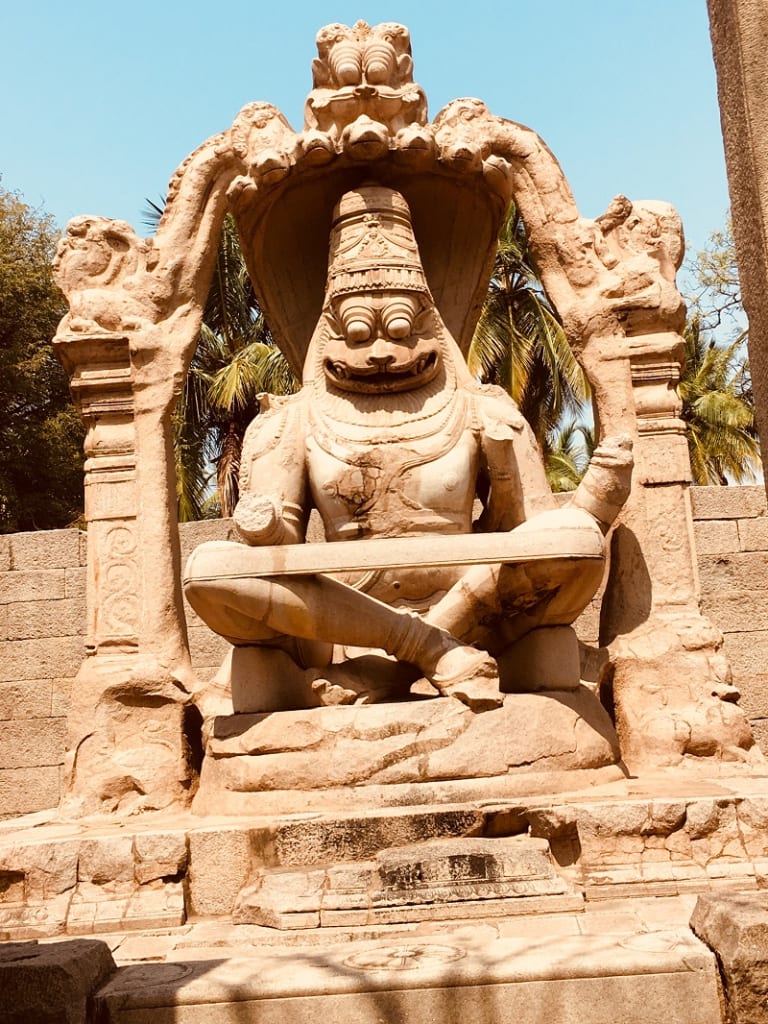
The biggest monolithic Shivalinga is called Badavi Linga and looks as if it is floating on the water. No wonder where the name ‘Badavi’ linga comes from.
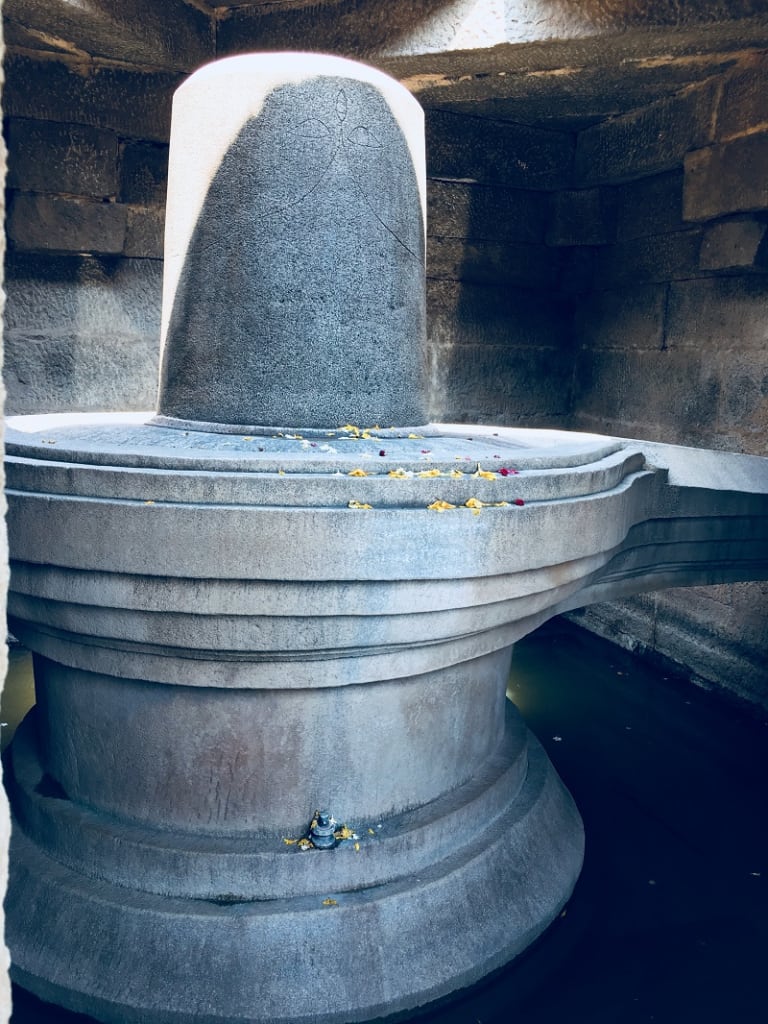
Vitthala Temple and the Royal Complex
Vitthala temple would again leave you awestruck. As you enter the temple, you will see a huge ‘ratha’ or chariot which is a replica of the one at Konark! King Krishnadevrai was very impressed by the chariot in Konark and hence built this replica here in Hampi. You can see two elephants pulling the chariot. There are other multiple carvings in which you can see a monkey, a snake, a Shiva Linga etc. The carvings again show a mix of Indian, Arabic, Portugese and Chinese culture. This stone chariot can be seen on the newly printed Rs.50 currency note of India.
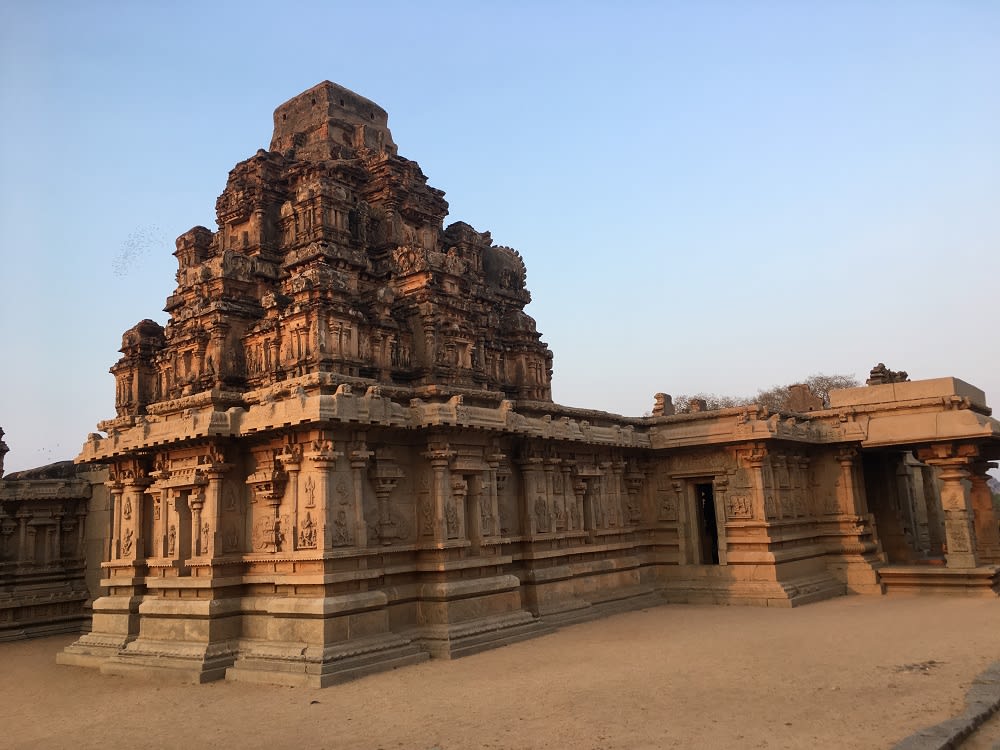
Fun fact: try creating sounds on the pillars – you can hear sounds of tabla, harmonium etc on different pillars. The story is there would be instrument players who would create sounds from these pillars and the queen and her friends would dance to sounds of these instruments.
You can see a marketplace where horses were sold earlier and also a market place where gold and diamonds were sold!
The architecture is so good that there is an arrangement made for rain water harvesting! Care is taken that water doesn’t go in the mandap. You would be zapped by the intelligence of our ancestors.
There are few more structures which are architecturally important like the palace of Krishnadevaraya, the summer palace and the huge elephant stables. You would be surprised to see, how natural air conditioning technique is implemented while constructing the palace! Tenali Rama had also created a watch-tower to look over the entire kingdom!
The more you see, the more you want to bow down to the intellect of our ancestors!
5] Coracle boat ride across Tungabhadra river
If you are tired of walking around, it’s now time to take some rest.The coracle boat ride is not be missed. The boat ride in the round boat takes you through caves and beautiful Shiva lingas. The cool breeze and the beautifully flowing Tungabhadra river will surely freshen you up!
6] Matanga Hill in Kishkindhanagari
You can plan the next day to visit to Matanga Hill of Kishkindanagari which is the kingdom of Sugriva,the Vanar king. It is the highest point in Hampi and gives a 360 degrees view of the entire area. This hill also has mythological significance as this is the place where Sugriva fled with Hanuman to save himself from King Vali. Later Lord Ram killed Vali and crowned Sugriva as the king of monkeys.
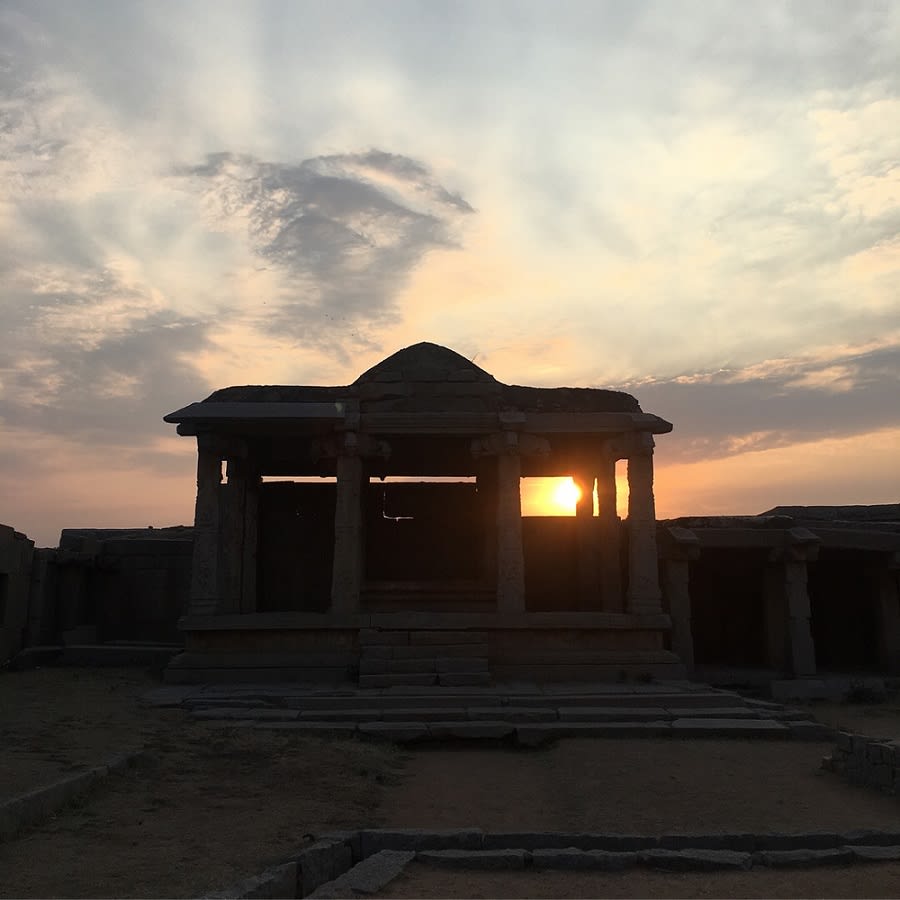
You can see Hampi Bazaar, Achyutaya Raya temple and Veerbhadra temple en route as you climb the place. The sunrise and sunset from Matanga hill are not to be missed!
7] Boulders in Hampi
The area near Hampi is famous for bouldering. Bouldering essentially means rock climbing but on smaller rocks and without the rock climbing equipment. Winter months of November and December are the best for bouldering in the area. As it is a risky sport, please do not try it without guidance.
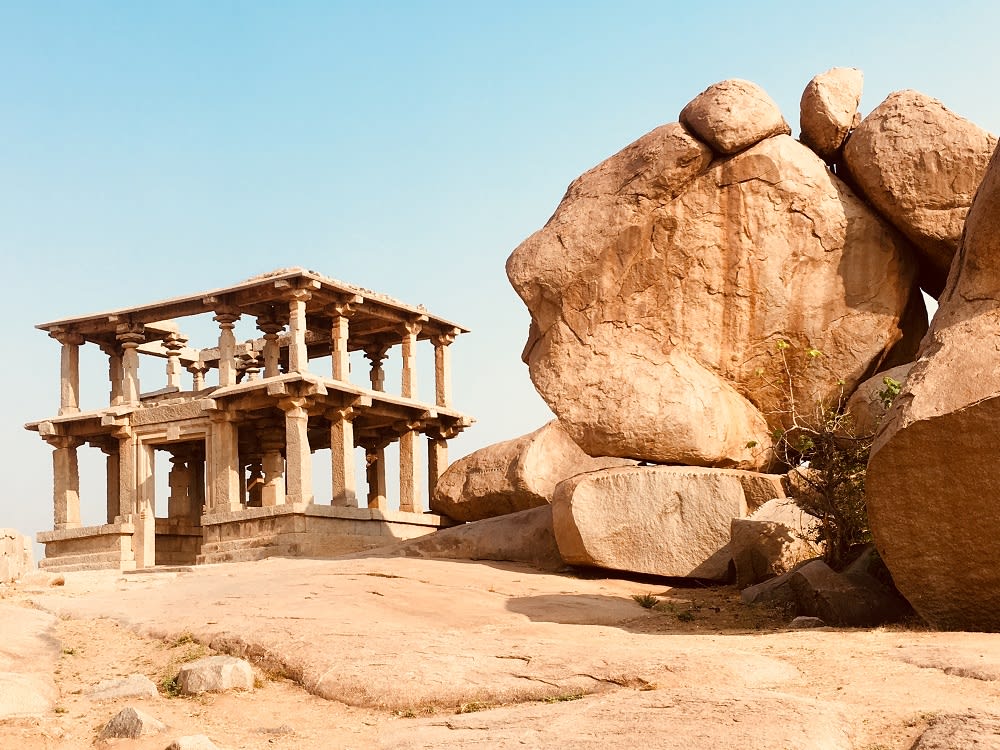
Places near Hampi
You can do a one day tour to Badami, Aihole, and Pattakadkol. Badami has ancient Jain caves, Pattakadkol and Aihole has beautiful temples. They are indeed worth a visit! Gandikota and Belum Caves are another such offbeat destinations you should not miss.
If you are looking for a different kind of holiday, an offbeat destination, then surely Hampi is a must-visit place. I am sure you will call it one of the best trips ever!
Have you been to Hampi? Share your experiences in the comments below.
If you think our travel guide was useful, then do not forget to drop in a line for us in the comments!


.jpg)




Visitor Rating: 1 Stars